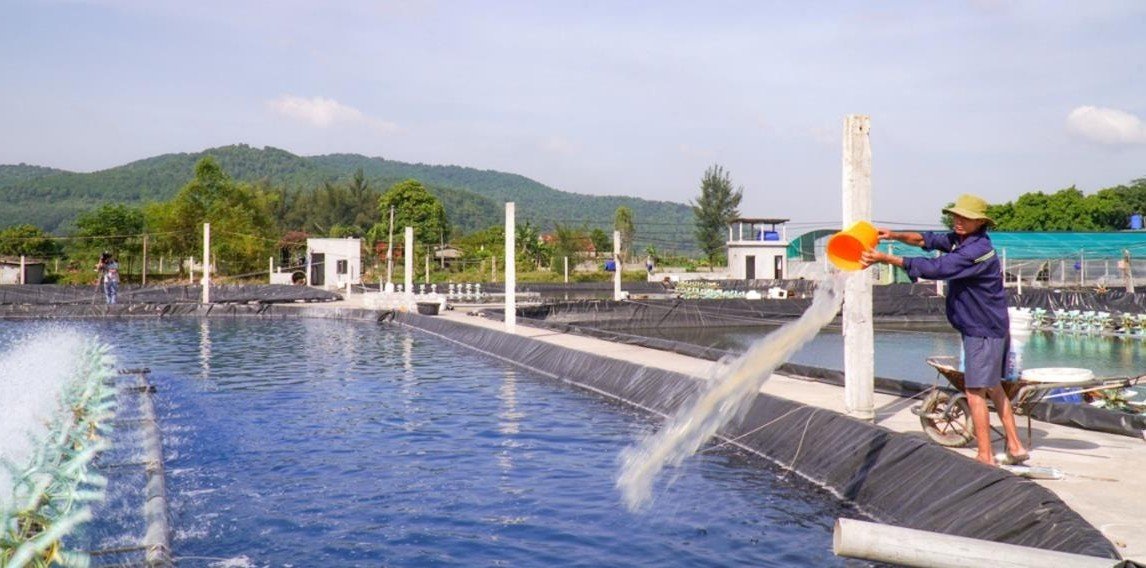Applying biotechnology in large-scale livestock farming
Over the years, the application of modern science and technology, including biotechnology, has been a direction to bring success at TH Dairy Food Joint Stock Company (Nghe An). With the characteristics of large-scale dairy farms, the issue of waste treatment of livestock is of particular concern to businesses.
At TH farm, leftover feces, feeds, and cage compost are collected, using specialized machines of high capacity to grinder, mix, and nurture. After more than a week of incubation, all that waste has turned into clean, safe organic fertilizer for use on the company's grass field.
The fertilizer rotary machine worth nearly 10 billion VND has been in operation for more than 14 years - still the largest machine in Vietnam in terms of fertilizer bed capacity, reaching nearly 52 tons/minute. This plant is considered the "green heart" of the TH farm cluster, implementing a closed circulation cycle, reducing methane (CH4) emissions by up to 70% - one of the toxic greenhouse gases.
Biotechnology brings outstanding efficiency

Over the years, the application of biotechnology has become a direction that has brought many achievements in agricultural production in Nghe An. According to Nghe An Provincial People's Committee, in the period of 2021-2025, the growth rate of agricultural - forestry - fishery will reach 4.6%/year, in which the application of biotechnology plays an important role.
A series of production models according to VietGAP, SRI, IPM standards, "3 reductions, 3 increases" have been deployed, helping agricultural products to be cleaner and more sustainable.
Biological products such as Biogreen, Val-A, Compost Marker or biological pesticides have helped gradually replace toxic chemicals, take advantage of agricultural byproducts, treat drug remains, produce organic fertilizers, and expand large-scale concentrated production areas.
In livestock farming, Nghe An promotes the application of biological film pads, probiotics, and HDPE-covered biogas tanks. The herd of dairy cows and beef cows has been modified in the direction of Zebuilding, the herd of foreign - mixed-race pigs accounts for more than 75% of the total herd. Large corporations such as TH, Masan, Vinamilk all apply biotechnology in all stages: from breeding, feed mixing, waste treatment to organic fertilizer production.
In the forestry sector, tissue culture technology is applied to propagate acacia trees, preserve and develop precious gene sources such as Puxailaileng, Lan Kim tuyen, Tam that bac, Ba co do. In the aquaculture sector, Semi-Biofloc card shrimp models, closed-ring farming, VietGAP eel farming or spirulina algae farming are helping to reduce antibiotics, increase resistance, and protect the water environment.
In particular, projects such as: Val-A preparation for drying rice - corn plant treatment, model of multi-gen rice variety resistant to silver leaf, or application of Lactobacillus rhamnosus in pig farming... are being widely deployed. All work towards a green, circular, low-emission agriculture, in which biotechnology is the main pillar.
Mr. Hoang Quoc Viet - Director of the Department of Agriculture and Environment of Nghe An province said: "biotechnology is an inevitable direction for the development of green and sustainable agriculture. Nghe An is focusing on applying to the fields of agriculture, livestock, forestry and fishery to improve productivity and product quality. The province will continue to expand circular production models, reduce emissions and increase economic value".





